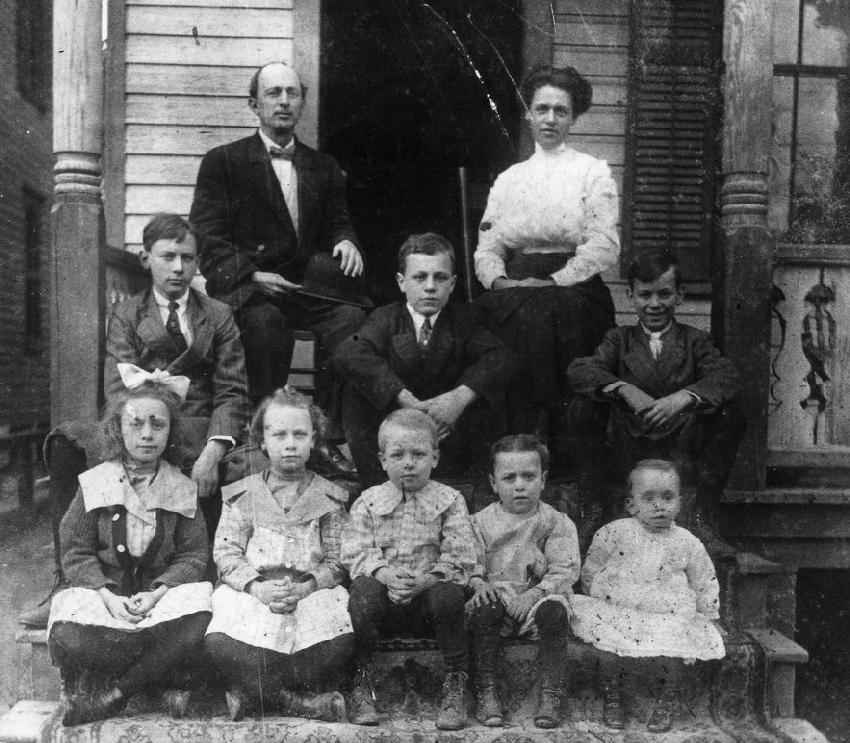
Home Sewing: Country Trends

Figure 1.--This 1912 photograph shows of an unidentified family with eight children. The mother here reportedly sewed all of the children's clothes. We had thought that mothers commonly were more likely to sew girls' dresses than outfits for boys beyond the todler phase. This mother had 4-5 boys to deal with. She seems to hsave been quite talented. Boys' suits were much more difficult than girls' dresses to sew. Note the next to youngest child. Given the center hsair sut we would guess the chilkd is a girl. Yet she is wearing a boy's tunic suit. Perhsaps it was a hand-me-down.
|
|
A HBC reader writes, "I get the impression that ready-made clothing was widely available in the United States earlier than in many other countries. This may have been because the United States had a large middle class earlier than some other countries." HBC is not sure about this, but it is an important question. Our informatioin on home sewing is very limited at this time. The develpment of sweing machine in America was clearly an important factor. Perhaps even more important factor was the development of consumer credit. The technology of manufacturing a sewing machine was relatively easy for countries like Britain and Germany to copy or develop. Developing a consumer credit system, especially one for low-income consumers was a greater challenge. This was no small matter. It was a factor in America outpacing European industry in the late-19th and early-20th century. And a sewing machine not only mean that a mother could sew better quality clothes more raspidly, but if she was skilled, she could lsaunch a small business. America in the area of consumer credit outpaced every other country in the wiorld. And it meant that most Americans, even those of very modest incomes could afford a sewing machine. American was also a leader in sewer friendly patterns. The Butterick graded paterns may be a factor here. Armed with a sewing machine and easy to use pattern, there was little a sewer of even modest skills could not achieve. We notice much more elaborate embroidery and decoration in many European countries than was the case of children's clothes made in America. Our information on sewing trends in various countries is still quite limited, but it is an important topic that needes to be developed.
HBC

Navigate the Historic Boys' Clothing Web chronological pages:
[Return to the Msain home sewing page]
[Return to the Main clothing technology page]
[Return to the Main 1850s page]
[Return to the Main 1910s family page]
[Introduction]
[Activities]
[Biographies]
[Chronology]
[Clothing styles]
[Countries]
[Girls]
[Topics]
[Bibliographies]
[Contributions]
[FAQs]
[Glossaries]
[Images]
[Links]
[Registration]
[Tools]
[Boys' Clothing Home]
Created: 11:10 AM 7/28/2009
Last updated: 11:10 AM 7/28/2009



